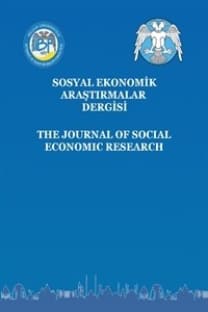Kürt sorununun kökleri Osmanlı’nın geç dönemlerine 1800’lere dayanmasına rağmen, 1923 yılında Türkiye Cumhuriyeti’nin kuruluşuyla hız kazanmış ve kapsamı genişlemiştir. Son 28 yılda bu çatışma, şiddet içermekte ve yoğunluğu Türkiye toplumunda ciddi bir korkunun kaynağını oluşturmaktadır. Son 30 yılda 40 binden fazla insanın hayatını kaybettiği dünyanın in çok şiddet barındıran çatışmalaından biri olmuştur. Heidelberg Uluslararası Çatışmaları Araştıma Enstitüsü (HIIK) tarafından Kürt sorunu şiddeetli bir kriz ya da sınırlı bir savaş olarak tanımlanmaktadır. Diğer benzer uluslararası siyasi çatışmalar gibi, Kürt sorunu da tıpkı bir aysberge benzer: Görünen çatışmanın ufak bir kısmıdır, fakat altında algılar, çıkarlar, değerler, kültür, davranışlar, ihtiyaçlar, varsayımlar, kuşkular ve baskılar var. Bu makale, tarihi arka planıyla, sosyal, ekonomik, kültürel ve siyasi nedenleriyle, dinamik ve aktörleriyle, çatışmayı tırmandıran tüm factor ve unruları analiz etmektedir. Son bölümde, çözüm önerileri üzerinde durmakta ve Kürt sorununun bir çözüm sürecinde bulunduğu, fakat gidilecek çok da yol olduğunu ileri sürmektedir.
REVISITING KURDISH QUESTION IN TURKEY: A HOPE FOR SOLUTION?
The root of Kurdish problem goes back to late Ottoman era mid-1800s while has gained momentum and its scope widened with the establishment of the Republic of Turkey in 1923. In the last 28 years, the conflict has been full of violence and its intensity has always been source of fears among the society in Turkey. It has been one of the most violence conflicts in the world in the last three decades when more than 40 thousand people lost their life. Kurdish conflict today, is considered by the Heidelberg Institute for International Conflict Research (HIIK) as a severe crises or a limited war. Kurdish problem, similar to other international political conflicts, is like an iceberg: what you see at the top is a small part of the conflict, but beneath what you get are perceptions, interests, values, culture, attitudes, needs, expectations, assumptions, suspicions, suppressions. This article analyzes the conflict in detail with its historical background, social, economic, cultural and political reasons, dynamics and actors, factors and elements that led the conflict escalation. In the last part, it focuses on policy proposal for resolution and argues that Kurdish problem is in a process of resolution yet there is a long way to go.
